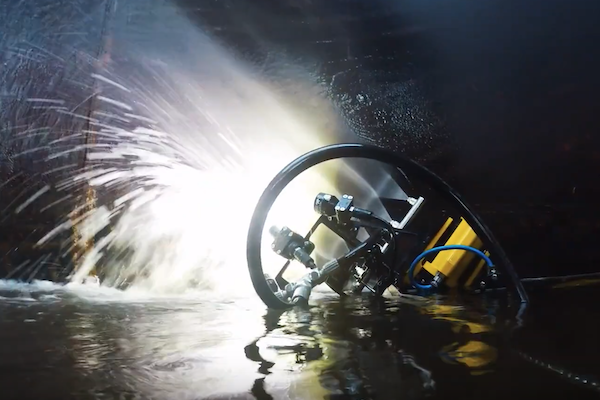Standing amidst powerful waves in salty waters, offshore wind turbines can suffer from rust and corrosion. Over time, they also accumulate weighty masses of algae and other microorganisms that can create drag, impede technicians trying to work on them and ultimately undermine and reduce turbines lifetimes at sea.
Sending divers to the depths of the ocean for maintenance and cleaning of subsea structures is a risky business that entails long delays as seas are in unsafe conditions for much of the year. Robotics that can utilise advanced testing methods to inspect and conduct pre-emptive maintenance on turbine structures reduce risk to life, costs, downtime and keep turbines going for longer.
Midlands-based Innvotek is focused on the development and manufacture of state-of-the-art robotic solutions to solve some of the offshore industries’ most difficult challenges in inspection and maintenance of critical infrastructure.
Its robotic technology is designed to operate in hazardous environments, so people are not put at risk. The solutions developed by Innvotek can work at height, confined spaces, explosive atmospheres and in the splash-zone for a wide range of applications in the offshore energy, shipping, construction and transport sectors.
In 2019, Innvotek joined forces with ORE Catapult to test and validate its Amphibian solution at our National Renewable Energy Centre through a series of underwater and above-water trials.
Amphibian, which can work above and below the waves (at depths of 60 metres), combines a unique set of mechanical and digital abilities which go beyond inspection to include maintenance and cleaning, including:
Following the success of the first projects, that have taken the platform to full operability, the Innvotek team are now poised to expand the platform’s abilities through a new research and development project. This project will test Amphibian’s ability to work within turbine nacelles too for inspection and maintenance of turbine generators.

In 2021, Innvotek was successful in its application to further develop its robotic crawler, equipped with bolt inspection capability and a tightening tool for generator maintenance, through the GE Renewable Energy and ORE Catapult’s ‘Stay Ashore’ research and development programme.
Innvotek was able to make extensive use of the technical support and testing capabilities offered by working directly with ORE Catapult and GE Renewable Energy. This programme led to valuable learnings which it can now add into the future deployment of their technology.
Shahid Mughal, Chief Executive Officer at Innvotek, said: “It’s been so exciting to be part of the Stay Ashore programme, which has been a vital part of progressing our technology, and we firmly believe this will reduce the time people have to spend working in challenging conditions. It’s an ideal job for a robotic solution like this.”
In early 2022, Innvotek partnered with Mapair to successfully trial a drone system that uses infrared technologies and artificial intelligence to inspect composite structures, including wind turbines and aircraft wings, for defects.
During trials at ORE Catapult’s National Renewable Energy Centre in Blyth, the drones demonstrated their ability to hover autonomously and manoeuvre close to vertically suspended wind turbine blades. The active thermography module enabled capture of variations in surface temperatures of blades when heated, revealing hidden imperfections that are not visible on the surface.